Plant Tissue Culture Media Ingredients
-
Laboratory-grade macronutrients, micronutrients, PGRs, and gelling agents
-
Batch-specific COA, MSDS, and ISO 9001 certification
-
Bulk packaging with volume discounts
-
India-wide delivery in 3–7 days
- Estimated Delivery : Up to 8 business days
- Free Shipping & Returns : On all orders over ₹1000
Buy Plant Tissue Culture Media Ingredients Online – High-Purity Components for Micropropagation and Research
Plant tissue culture media ingredients are the essential building blocks for successful in vitro plant growth, enabling rapid, disease-free propagation of elite plant varieties. When you buy plant tissue culture media ingredients online, you secure laboratory-grade components that form the foundation of nutrient media for micropropagation, genetic engineering, germplasm conservation, and biopharmaceutical production. Our buy plant tissue culture media ingredients online in India service ensures premium-quality, standardized ingredients with comprehensive documentation, reliable supply, and prompt delivery.
Plant Tissue Culture Media Ingredients – Overview and Scientific Significance
Plant tissue culture media ingredients are meticulously formulated to replicate the nutritional and hormonal environment required for plant cells, tissues, or organs to thrive in vitro. These ingredients include macronutrients, micronutrients, vitamins, amino acids, carbohydrates, plant growth regulators (PGRs), gelling agents, and specialized additives. Each component plays a critical role in cell division, morphogenesis, and metabolic processes, making ingredient quality non-negotiable for reproducible results.
Key Categories of Plant Tissue Culture Media Ingredients
| Category | Function | Examples |
|---|---|---|
| Macronutrients | Provide essential elements (N, P, K, Ca, Mg, S) | NH₄NO₃, KNO₃, CaCl₂, MgSO₄, KH₂PO₄ |
| Micronutrients | Supply trace elements for enzyme function | Fe-EDTA, MnSO₄, ZnSO₄, CuSO₄, CoCl₂, H₃BO₃ |
| Vitamins | Support metabolic pathways and coenzymes | Thiamine (B1), Nicotinic Acid (B3), Pyridoxine (B6) |
| Amino Acids | Act as nitrogen sources and osmotic agents | Glycine, Glutamine, Casein Hydrolysate |
| Carbohydrates | Provide energy and carbon skeletons | Sucrose, Glucose, Fructose |
| Plant Growth Regulators | Control cell division, organogenesis | Auxins (IAA, IBA, NAA), Cytokinins (BAP, Kinetin) |
| Gelling Agents | Solidify media for explant support | Agar, Gellan Gum, Agarose |
| Organic Supplements | Enhance growth in recalcitrant species | Coconut Water, Banana Powder, Activated Charcoal |
Buy Plant Tissue Culture Media Ingredients – Detailed Component Analysis
1. Macronutrients: The Structural Backbone
Macronutrients supply nitrogen, phosphorus, potassium, calcium, magnesium, and sulfur—elements required in millimolar concentrations. They form the structural and functional basis of plant cells.
Key Macronutrient Specifications
| Compound | Role | Concentration (mg/L in MS Media) |
|---|---|---|
| Ammonium Nitrate (NH₄NO₃) | Primary nitrogen source | 1,650 |
| Potassium Nitrate (KNO₃) | Provides K⁺ and NO₃⁻ | 1,900 |
| Calcium Chloride (CaCl₂) | Cell wall integrity, membrane function | 440 |
| Magnesium Sulfate (MgSO₄) | Chlorophyll synthesis, enzyme activation | 370 |
| Potassium Phosphate (KH₂PO₄) | Energy transfer, buffering | 170 |
Deficiency Risks:
-
Low nitrogen → Stunted growth, chlorosis
-
Low calcium → Shoot tip necrosis
-
Low magnesium → Leaf yellowing
2. Micronutrients: Catalysts for Metabolic Activity
Micronutrients are required in trace amounts (micromolar concentrations) but are vital for enzyme function, photosynthesis, and redox reactions.
Key Micronutrient Specifications
| Compound | Role | Concentration (mg/L in MS Media) |
|---|---|---|
| Fe-EDTA | Electron transport, chlorophyll synthesis | 36.7 |
| Manganese Sulfate (MnSO₄) | Photosystem II activity | 22.3 |
| Zinc Sulfate (ZnSO₄) | Auxin synthesis, enzyme cofactor | 8.6 |
| Boric Acid (H₃BO₃) | Cell wall formation, sugar transport | 6.2 |
| Copper Sulfate (CuSO₄) | Lignin synthesis, respiration | 0.025 |
Critical Insight: Iron is stabilized as Fe-EDTA to prevent precipitation at pH 5.8.
3. Vitamins and Amino Acids: Metabolic Enhancers
Vitamins act as coenzymes, while amino acids serve as organic nitrogen sources and osmoticum.
Essential Vitamins & Amino Acids
| Component | Role | Concentration (mg/L in MS Media) |
|---|---|---|
| Thiamine (B1) | Carbohydrate metabolism | 0.1–10 |
| Nicotinic Acid (B3) | Redox reactions, NAD/NADP synthesis | 0.5–5 |
| Pyridoxine (B6) | Amino acid metabolism | 0.5–5 |
| Glycine | Precursor for purines, chlorophyll | 2.0 |
| Myo-Inositol | Membrane formation, signal transduction | 50–100 |
Pro Tip: Casein hydrolysate (500–2,000 mg/L) provides organic nitrogen for challenging species like orchids.
4. Carbohydrates: Energy Substrates
Sucrose (20–30 g/L) is the primary carbon source, hydrolyzed into glucose and fructose for energy. Alternatives include glucose (for monocots) and maltose (for embryogenesis).
5. Plant Growth Regulators (PGRs): Directors of Morphogenesis
PGRs are hormones that control cell division, organogenesis, and rooting. Their ratios determine developmental pathways.
PGR Applications by Stage
| Stage | Auxins | Cytokinins | Outcome |
|---|---|---|---|
| Callus Induction | 2,4-D (1–5 mg/L) | Low/Zero | Undifferentiated cell mass |
| Shoot Multiplication | Low NAA (0.1–0.5 mg/L) | BAP (1–3 mg/L) | 5–10x shoot proliferation |
| Rooting | IBA (0.5–2 mg/L) | Zero | Adventitious root formation |
| Somatic Embryogenesis | 2,4-D + Kinetin | Balanced | Embryo formation without fertilization |
Formulation Tip: Use NAA for stable auxin activity; IBA for root induction.
6. Gelling Agents and Additives
Gelling Agents
| Agent | Concentration | Advantages | Limitations |
|---|---|---|---|
| Agar | 6–10 g/L | Cost-effective, easy to use | May contain impurities |
| Gellan Gum | 1.5–3 g/L | Clear, pure, low autoinhibition | Requires divalent cations (Ca²⁺) |
| Agarose | 5–8 g/L | High purity, ideal for protoplasts | Expensive |
Specialized Additives
-
Activated Charcoal (0.5–2 g/L): Adsorbs phenolics and toxins.
-
Coconut Water (5–20% v/v): Natural source of cytokinins and nutrients.
-
Antibiotics (e.g., Timentin™): Suppress bacterial contamination.
Popular Plant Tissue Culture Media Formulations
Standard Media Compositions
| Medium | Best For | Key Features |
|---|---|---|
| Murashige & Skoog (MS) | Universal for dicots and monocots | High nitrate, balanced micronutrients |
| Gamborg’s B5 | Legumes, cell suspensions | Low NH₄⁺, optimized for callus |
| Woody Plant (WPM) | Trees (oak, pine, eucalyptus) | Low salts, high Ca²⁺ |
| Nitsch & Nitsch | Anther/pollen culture | High vitamins, biotin, folic acid |
| White’s Medium | Root cultures, minimal growth | Low salt, high MgSO₄ |
Preparation of Plant Tissue Culture Media: Step-by-Step Protocol
-
Weigh Components: Use analytical-grade ingredients. Pre-mixed basal salts (e.g., MS powder) save time.
-
Dissolve in Water: Add 800 mL tissue-culture-grade water to a beaker. Stir with magnetic bar.
-
Add Sequentially:
-
Macronutrients → Micronutrients → Vitamins → Amino Acids → Sugars → PGRs
-
-
Adjust pH: Use 0.1M KOH/HCl to reach pH 5.8 (±0.1).
-
Add Gelling Agent: Sprinkle agar/gellan gum slowly to avoid clumping.
-
Autoclave: Sterilize at 121°C, 15 psi for 20 minutes.
-
Pour Under Laminar Flow: Dispense 25–30 mL per Petri dish or culture vessel.
Critical Checks:
-
Post-autoclave pH should be 5.6–5.8.
-
Media should solidify clearly without cloudiness.
Quality Assurance and Storage Guidelines
| Parameter | Requirement | Rationale |
|---|---|---|
| Purity | ≥99% (ACS/USP grade) | Prevents toxicity or inhibition |
| Water Content | ≤0.1% (Karl Fischer) | Ensures accurate dosing |
| Heavy Metals | ≤10 ppm (ICP-MS) | Avoids metabolic disruption |
| Storage | Cool (15–25°C), dry, dark environment | Prevents degradation and moisture uptake |
| Shelf Life | 24–36 months in sealed containers | Maintains chemical stability |
Applications of Plant Tissue Culture Media Ingredients
-
Micropropagation: Mass production of disease-free banana, potato, or orchids.
-
Genetic Engineering: CRISPR/Cas9 editing in rice or tobacco.
-
Secondary Metabolite Production: Taxol from yew cell cultures.
-
Germplasm Conservation: Cryopreservation of endangered species.
-
Haploid Production: Doubled haploid technology in maize breeding.
How to Buy Plant Tissue Culture Media Ingredients at chemikalstore.com
-
Visit chemikalstore.com → Search “plant tissue culture media ingredients”.
-
Filter by Application:
-
Macronutrients: NH₄NO₃, KNO₃, CaCl₂
-
PGRs: IBA, BAP, 2,4-D
-
Gelling Agents: Agar, Gellan Gum
-
-
Review COA/MSDS: Ensure batch-specific traceability.
-
Bulk Discounts: Orders >5 kg attract 10–15% discounts.
-
Express Shipping: Delivery across India in 3–7 business days.
Frequently Asked Questions (FAQ)
Q1: Can I use food-grade agar for tissue culture?
A: No. Food-grade agar contains impurities. Use tissue-culture-grade agar (e.g., HiMedia™ TC Agar) for consistent results.
Q2: Why is my media turning yellow after autoclaving?
A: Degradation of PGRs or caramelization of sucrose. Adjust pH to 5.8 and reduce autoclave time.
Q3: How do I store PGR stock solutions?
A: Auxins/Cytokinins: 1 mg/mL in 0.1M NaOH/DMSO at -20°C. Gibberellins: Ethanol stocks at 4°C.
Q4: What substitutes exist for coconut water?
A: Banana powder (100 mg/L) or commercial cytokinin blends (e.g., 2iP).
Q5: Is sucrose mandatory? Can I use table sugar?
A: Sucrose is optimal. Table sugar contains antifoaming agents that inhibit growth.
Q6: How to troubleshoot vitrification (hyperhydricity)?
A: Reduce cytokinins, increase gelling agent concentration, or add 0.3% activated charcoal.
Q7: What’s the shelf life of prepared media?
A: 4–6 weeks at 4°C. Discard if dehydrated or contaminated.
Q8: Can I reuse media components?
A: Never reuse. Cross-contamination risks are high.
Global Market Trends and Innovations
-
Custom Media Kits: Pre-weighed blends for species like Cannabis or vanilla.
-
Nanoparticle Delivery: Nano-encapsulated PGRs for controlled release.
-
Automated Media Prep: Robotic systems for high-throughput labs.
-
Sustainability: Biodegradable gelling agents from seaweed or cassavaFor bulk orders, technical queries, or customized pricing, contact our support team at chemikalstore.com.

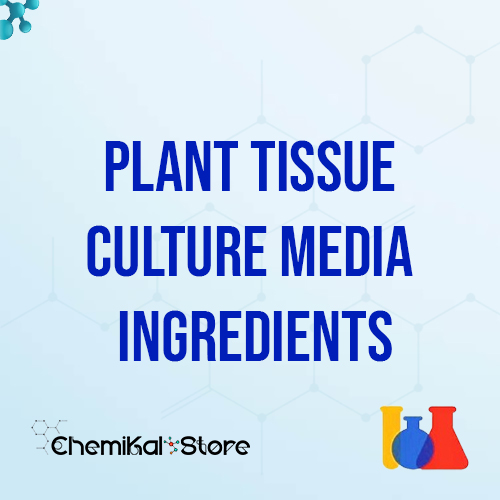



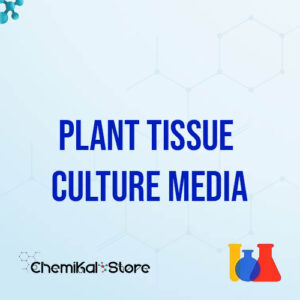

 Newnik Fingertip Pulse Oximeter with Audio
Newnik Fingertip Pulse Oximeter with Audio 






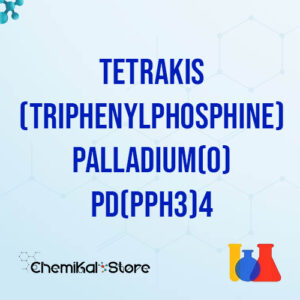
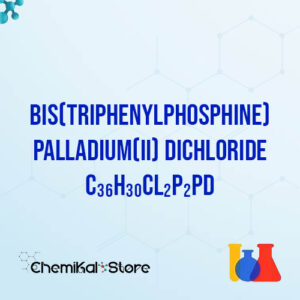
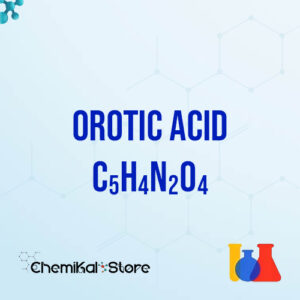
Reviews
There are no reviews yet.